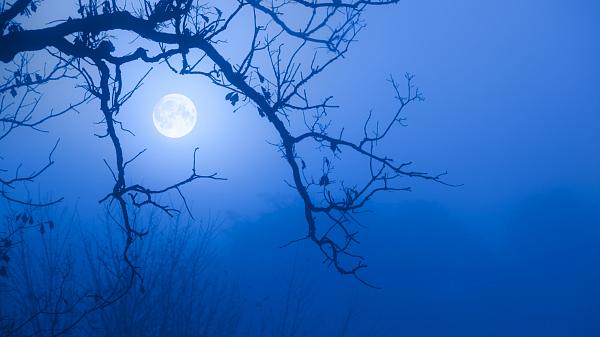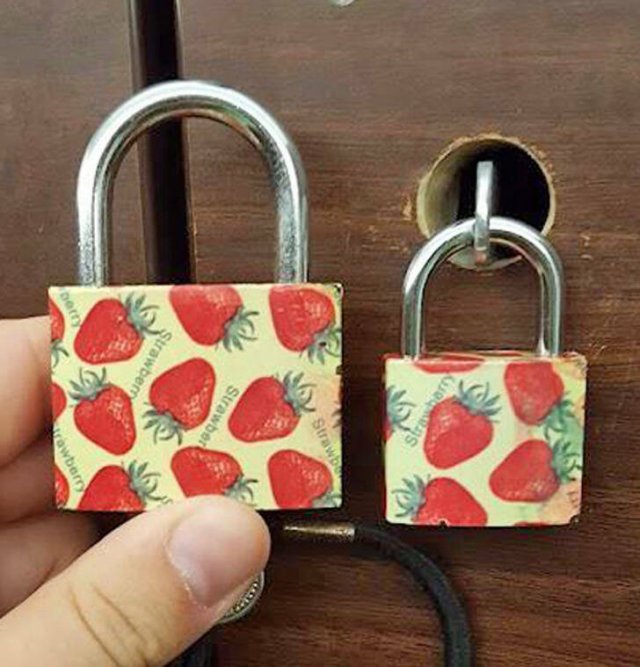Log in
Statistics
We have 476 registered usersThe newest registered user is Yui_fan
Our users have posted a total of 45421 messages in 6657 subjects
THAT’S ENTERTAINMENT
CLICK ON ANY OF THESE LINKS TO FIND OUR EXTREME ENTERTAINMENT
UPDATED :
71 WGT TUTORIALS & 32 YOUNG46 TUTORIALS
CLICK HERE TO SEE OVER 100 YOUTUBE VIDEO TUTORIALS . FROM WGTers , WGT & YOUNG46 FORUM UPDATE
TO THE MANY WELCOME GUESTS . THIS FORUM IS NO LONGER A COUNTRY CLUB WEBSITE FOR A WGT COUNTRY CLUB . PLEASE FEEL FREE TO READ THE FORUMS.
THERE ARE MANY TOPICS OF INTEREST . OR NOT . THIS WEBSITE IS AN INFORMATION AND ENTERTAINMENT WEBSITE ONLY .
MUCH OF THE CONTENT IS ARCHIVES OF PURPOSES PAST .
THERE ARE SOME MORE CURRENT TOPICS .
REGISTRATION IS NOT NECESSARY TO READ THROUGHOUT .
REGISTRATION IS EASY AND FREE . THIS IS AN AD FREE WEBSITE . NOTHING IS EVER REQUESTED FROM REGISTERED MEMBERS .
REGISTRATION ENABLES COMMENTING ON TOPICS . POSTING NEW TOPICS . FULL ACCESS TO THE WEBSITE IMAGE HOST . WHICH IS A VERY COMPLETE AND CONVENIENT TOOL .
PLEASE ENJOY .
TIER & AVERAGE REQUIREMENTS
BASIC LEVEL AND AVERAGE REQUIREMENTS , AND SATURATION

WHILE YOUR HERE
WHILE YOUR HERE :
CHECK OUT THE INCREDIBLE PHOTOGRAPHY IN
MY SERIES
THIS USED TO BE THE HOME OF OUR WORLD CLOCK . WHICH CAN NOW BE FOUND IN ITS OWN FORUM ON THE MAIN PAGE ..
THERE ARE MORE WORLD CLOCKS INSIDE HERE .
WORLD CLOCK
FB Like
???? How rare are blue moons?
Page 1 of 1
 ???? How rare are blue moons?
???? How rare are blue moons?

What Is A Blue Moon?
Have you ever heard someone say that a situation happens only “once in a blue moon”? This usually means that whatever is being described is so rare that you’re not likely to see it for a very long time. But where did this phrase come from? What exactly is a blue moon — and are they really that rare?
So, What’s a Blue Moon?

It turns out that the term “blue moon” can have multiple definitions, so we’ll describe them and then clarify. The first version of a blue moon is when there are two full moons within a calendar month. The second (and older) definition refers to the third full moon in a season with four full moons. And the last usage describes a moon that appears bluish in color.
If you're confused, we understand. It’s a little odd that three naturally occurring lunar phenomena have the same name. And while all three of these scenarios are rare and don’t happen every month, depending on the definition, they’re not that infrequent. So, let’s break down the various blue moons and why they happen.
Blue Moon: Two Full Moons in a Calendar Month

This one is probably the most confusing to understand because it has to do with the total number of days in a calendar month as compared to the total number of days in a lunar cycle. However, this version of a blue moon is what most people are thinking of when they use the "once in a blue moon" saying. As you know, months within the Gregorian calendar can have anywhere from 28 to 31 days, but the lunar phase cycle doesn’t waiver. There are always 29.5 days. (To clarify, a lunar phase refers to the shape of the illuminated part of the moon as seen from Earth. This is how we track things like a new moon, crescent moon, quarter moon, gibbous moon, and full moon.)
Two full moons can appear in a single calendar month because of the inconsistent number of days in our months. If a lunar phase is always 29.5 days, but some months have an additional half-day or more, over time the lunar phase would grow to be out of sync with our calendar months, and a second full moon could occur in one month. The term "blue moon," then, can refer to either that second full moon or the overall phenomenon. By this definition, the most recent blue moon was March 31, 2018, and the next one will appear on October 31, 2020.
Blue Moon: The Third Full Moon in a Season With Four Full Moons
This definition of a blue moon is what was originally meant by the term. It refers to the third full moon in a season with four full moons, where seasons are delineated by the solstices and equinoxes. A typical season has only three full moons (one per month), so a season with four full moons is relatively rare, occurring every two-and-a-half years.
Blue Moon: When the Moon Appears Blue

Of the blue moon definitions, this is the rarest (and most literal). For this scenario to occur, atmospheric conditions have to be perfect. There must be smoke or dust particles in the atmosphere that are slightly bigger than 900 nanometers in size. For some reason, in this size range, the particles scatter any red light and cause the moon to appear blue. This occurs only after a major geological or weather event such as a dust storm, volcanic eruption, or a forest fire. Blue moons were reported shortly after the eruptions of Mount Saint Helens in the United States, El Chichon in Mexico, and Mount Pinatubo in the Philippines.
Blue Moon Combinations
There are times that a blue moon can combine with other rare moon events to create super events. For example, on January 31, 2018, there was a total lunar eclipse. These types of events usually cause the moon to look red, giving it the common name “Blood Moon.” But on that particular night, the moon was at one of its closest positions to the Earth, almost making it a supermoon, when the moon looks exceptionally large in the night sky. Because that full moon was a blood moon and a supermoon, it was dubbed the Super Blue Blood Moon. What Is a Blue Moon and When Is the Next One?
What Is a Blue Moon and When Is the Next One?
By Vigdis Hocken and Aparna Kher
On August 30/31, 2023, a Blue Moon will shine brightly in the night sky. It is a monthly Full Moon—the second Full Moon in August. And no, it will not turn blue.

A Blue Moon is very rarely blue.
 iStockphoto.com/JamesBrey
iStockphoto.com/JamesBrey
This is also a Super Full Moon, making it a Super Blue Moon.
The next seasonal Blue Moon takes place on August 19/20, 2024.
Since both of them happen in August, they are traditionally called Sturgeon Moons.
Names of all the Full Moons in a year
Some believe that the term “blue moon” meaning something rare may have originated from when smoke and ashes after a volcanic eruption turned the Moon blue. Others trace the term's origin to over 400 years ago—folklorist Philip Hiscock has suggested that invoking the Blue Moon once meant that something was absurd and would never happen.
We can thank the Christian ecclesiastical calendar for the reason why the third Full Moon of the season is called the Blue Moon. The calendar uses the phases of the Moon to determine the exact dates for holidays like Lent and Easter.
The month of Lent contains the final Full Moon of winter, Lenten Moon. The first Full Moon of spring—also known as the Easter Moon or the Paschal Moon—falls just before Easter. Naming the third Moon of the season as the Blue Moon ensured that Lent and Easter coincided with the right Moon phases, and other celebrations and customs would still fall during their “proper” times.
The Moon: Our natural satellite
Is there a perfect calendar?
At timeanddate.com, you will find the dates and times of both seasonal and monthly Blue Moons in your time zone.
Sleep, crime, and menstruation: how Full Moons affect humans
Seasonal Blue Moons take place slightly less frequently than monthly Blue Moons—in the 1100 years between 1550 and 2650, there are 408 seasonal Blue Moons and 456 monthly Blue Moons. This means that either type of Blue Moon occurs roughly every two or three years.
Blue Moons that are blue are incredibly rare and have nothing to do with the calendar or the Moon's phases but are instead a result of atmospheric conditions. Volcanic ashes and smoke, water droplets in the air, or certain types of clouds can all contribute to a Full Moon taking on a blue shade on rare occasions.
The Moon can sometimes look red
Known as a Double Blue Moon, this phenomenon is rather uncommon and takes place only about three to five times in a century. We saw a Double Blue Moon in 2018 in most time zones and will see it again 19 years later, in 2037, in many time zones.
Astronomical terms & definitions
In the same period, 21 years have Triple Blue Moons—one seasonal and two monthly Blue Moons in the same calendar year. The next is in 2143, while the last time was in 1961.
Two seasonal Blue Moons in a year is an impossibility, as that would require 14 Full Moons in the same year.
How can Full Moon be in the daytime?
On August 30/31, 2023, a Blue Moon will shine brightly in the night sky. It is a monthly Full Moon—the second Full Moon in August. And no, it will not turn blue.

A Blue Moon is very rarely blue.
This is also a Super Full Moon, making it a Super Blue Moon.
What Is a Blue Moon?
There are two different definitions for a Blue Moon. A seasonal Blue Moon is the third Full Moon of an astronomical season that has four Full Moons. A monthly Blue Moon is the second Full Moon in a calendar month with two Full Moons.When Is the Next Blue Moon?
The next monthly Blue Moon is on August 30/31, 2023.The next seasonal Blue Moon takes place on August 19/20, 2024.
Since both of them happen in August, they are traditionally called Sturgeon Moons.
Names of all the Full Moons in a year
Why Is It Called a Blue Moon?
The historical origins of the term and its two definitions are shrouded in a bit of mystery and, by many accounts, an interpretation error.Some believe that the term “blue moon” meaning something rare may have originated from when smoke and ashes after a volcanic eruption turned the Moon blue. Others trace the term's origin to over 400 years ago—folklorist Philip Hiscock has suggested that invoking the Blue Moon once meant that something was absurd and would never happen.
Origins of the Seasonal Full Moon
The definition of a seasonal Blue Moon, the third Full Moon in an astronomical season with four Full Moons, can be traced back to the now-defunct Maine Farmer's Almanac. According to the Almanac, the appearance of a 13th Full Moon in a year ‘upset the arrangement of Church festivals.’ The unlucky status of the number 13 and the difficulties of calculating the occurrence of such a Full Moon led to the extra Full Moon being named a Blue Moon.We can thank the Christian ecclesiastical calendar for the reason why the third Full Moon of the season is called the Blue Moon. The calendar uses the phases of the Moon to determine the exact dates for holidays like Lent and Easter.
The month of Lent contains the final Full Moon of winter, Lenten Moon. The first Full Moon of spring—also known as the Easter Moon or the Paschal Moon—falls just before Easter. Naming the third Moon of the season as the Blue Moon ensured that Lent and Easter coincided with the right Moon phases, and other celebrations and customs would still fall during their “proper” times.
The Moon: Our natural satellite
Is there a perfect calendar?
Origins of the Monthly Blue Moon
The more popular definition of the Blue Moon, that of the second Full Moon in a month, owes its existence to a misinterpretation originally made by amateur astronomer James Hugh Pruett (1886–1955) in a 1946 edition of Sky & Telescope magazine. The error took on a life of its own and spread around as fact. It even found its way into the answers of the 1986 version of the board game Trivial Pursuit! Today, this definition is considered a second definition of the Blue Moon rather than a mistake.At timeanddate.com, you will find the dates and times of both seasonal and monthly Blue Moons in your time zone.
Sleep, crime, and menstruation: how Full Moons affect humans
How Rare Is a Blue Moon?
For a monthly Blue Moon to take place, a Full Moon must occur at the beginning of the month. This is because the time between two successive Full Moons is approximately 29.5 days, just short of most months in the Gregorian Calendar.Seasonal Blue Moons take place slightly less frequently than monthly Blue Moons—in the 1100 years between 1550 and 2650, there are 408 seasonal Blue Moons and 456 monthly Blue Moons. This means that either type of Blue Moon occurs roughly every two or three years.
Blue Moons that are blue are incredibly rare and have nothing to do with the calendar or the Moon's phases but are instead a result of atmospheric conditions. Volcanic ashes and smoke, water droplets in the air, or certain types of clouds can all contribute to a Full Moon taking on a blue shade on rare occasions.
The Moon can sometimes look red
Double Blue Moon
Because of this, February, which has 28 days in a Common Year and 29 days in a Leap Year, can never have a monthly Blue Moon. Some years, February has no Full Moon at all, which is called a Black Moon. A February with no Full Moon happens when January and March have a Blue Moon each.Known as a Double Blue Moon, this phenomenon is rather uncommon and takes place only about three to five times in a century. We saw a Double Blue Moon in 2018 in most time zones and will see it again 19 years later, in 2037, in many time zones.
Astronomical terms & definitions
Seasonal and Monthly Blue Moons Together
Seasonal and monthly Blue Moons can also sometimes occur in the same year. Between 1550 and 2650, 20 years have one seasonal and one monthly Blue Moon in many time zones. The last time this happened was in 1934 and the next time will be in 2048.In the same period, 21 years have Triple Blue Moons—one seasonal and two monthly Blue Moons in the same calendar year. The next is in 2143, while the last time was in 1961.
Two seasonal Blue Moons in a year is an impossibility, as that would require 14 Full Moons in the same year.
How can Full Moon be in the daytime?
Not the Same Worldwide
The Moon reaches its various phases at specific moments. But because of time zones, the local time of a Full Moon can differ from one location to another. For instance, the Blue Moon in August 2023 takes place at 01:35 UTC on August 31. Locations in time zones that are at least 1:30 hours behind UTC, including New York City, Rio De Janeiro, and Vancouver, will see their Full Moon take place on August 30, 2023. Similar topics
Similar topics» VOTSCC CLUB ART
» WebMD * How to Get Rid of Blue Balls *
» TRIVIA GENIUS *What Is A Blue Moon?*
» NAT GEO * a cleaner way to make blue jeans. *
» Blue Beam Lights Up Very Active Meteor Shower ☄️????
» WebMD * How to Get Rid of Blue Balls *
» TRIVIA GENIUS *What Is A Blue Moon?*
» NAT GEO * a cleaner way to make blue jeans. *
» Blue Beam Lights Up Very Active Meteor Shower ☄️????
Page 1 of 1
Permissions in this forum:
You cannot reply to topics in this forum
 Events
Events















































































» YOUTUBE SHORTS * AGT...2 *
» YOUTUBE SHORTS respect only...6
» YOUTUBE SHORTS OFF THE WALL...22
» YOUTUBE SHORTS SPORTS ONLY...7
» LET's GO SHORTS & GIF's...7
» YOUTUBE SHORTS WWE...22
» ASIAN HOTTIES
» YOUTUBE SHORTS ANIMALS ONLY...4
» HEY JOE * MUSIC COMPILATION OF WILD SHIT *
» Unbelievable Dashcam Captures: Crazy Moments on the Road Compilation!
» YOU TUBE SHORTS MUSICIANS ONLY...10
» Best of Becky Lynch full match marathon
» MEMEBODIA...3
» GIRL ATHELETES VIDS PICS GIFS COMPILATION...13